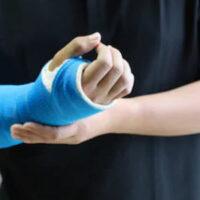Types of Bone Fractures Caused by Accidents

Many people assume that bone fractures are all the same; however, there are many different types of bone fractures that can occur in accidents that can have substantially varied impacts on different parts of the body. At Mitch Grissim & Associates in Nashville, our experienced attorneys appreciate the differences in bone fractures caused by accidents and understand how different breaks may impact the overall compensation in your case. To learn more, call or contact our office to schedule a free case evaluation today.
Common Bones Broken in Accidents
While any bone can be broken in an accident, certain bones are more likely than others to be fractured in a personal injury case. In auto and boating accidents, fractures occur most often with the following bones:
- Vertebrae in the neck and spine
- Femur (thigh bone)
- Collarbone
- Pelvic bone
- Ribs
- Skull
- Ankles
- Wrists
- Tibia and fibula (legs)
- Ulna and radius (arms)
Bone fractures can range from mild cracks that will heal in a matter of weeks to complicated crush injuries that require surgery, plates, and pins to set and heal.
Types of Bone Fractures
There are multiple types of bone fractures that can occur in a car, truck, motorcycle, or boating accident. The type of fracture and location on the body often dictate the medical treatment required to set and heal the bone properly. Some of the most common types of bone breaks include transverse, compound, comminuted, buckle, stress, oblique, avulsion, and hairline fractures.
Transverse: The bone breaks into two pieces due to a direct force or hit.
Compound: The bone breaks and pushes out through the skin. There is a higher likelihood of infection with compound fractures.
Comminuted: The bone breaks into three or more pieces, often due to extreme pressure or force. This is a very difficult type of fracture to repair.
Buckle: Also known as an incomplete fracture, the bone begins to bend, rupture, or strain but no break occurs. This is most common in accident victims that are children, as their bones are softer and not fully formed.
Stress: This type of fracture is a partial break of the bone, where one side of the bone breaks and the other side bends.
Oblique: This type of bone fracture occurs when the bone breaks along the diagonal length of the bone. An oblique fracture is rare but happens most often in accidents where one bone is trapped, and another bone is twisted on top of it.
Avulsion: This type of fracture occurs when the bone and the soft tissue around it separate. Examples include tendons or ligaments that connect a bone to another bone. An avulsion fracture often requires surgery to rectify.
Hairline: This type of bone break occurs when partial breaks or cracks appear in the bone. If not identified and treated, a hairline fracture can grow into a worse break, causing pain and weakening of the bone.
Talk to Our Office Now
Have you or a loved one suffered a bone fracture in an accident caused by someone else? If so, you may have a claim for compensation with a personal injury case. To learn more about your legal options, call the office or contact our Nashville personal injury attorneys at Mitch Grissim & Associates to schedule a free consultation of your claim.
Resource:
my.clevelandclinic.org/health/diseases/15241-bone-fractures
https://mitchgrissim.com/limits-on-tennessee-personal-injury-claims/

